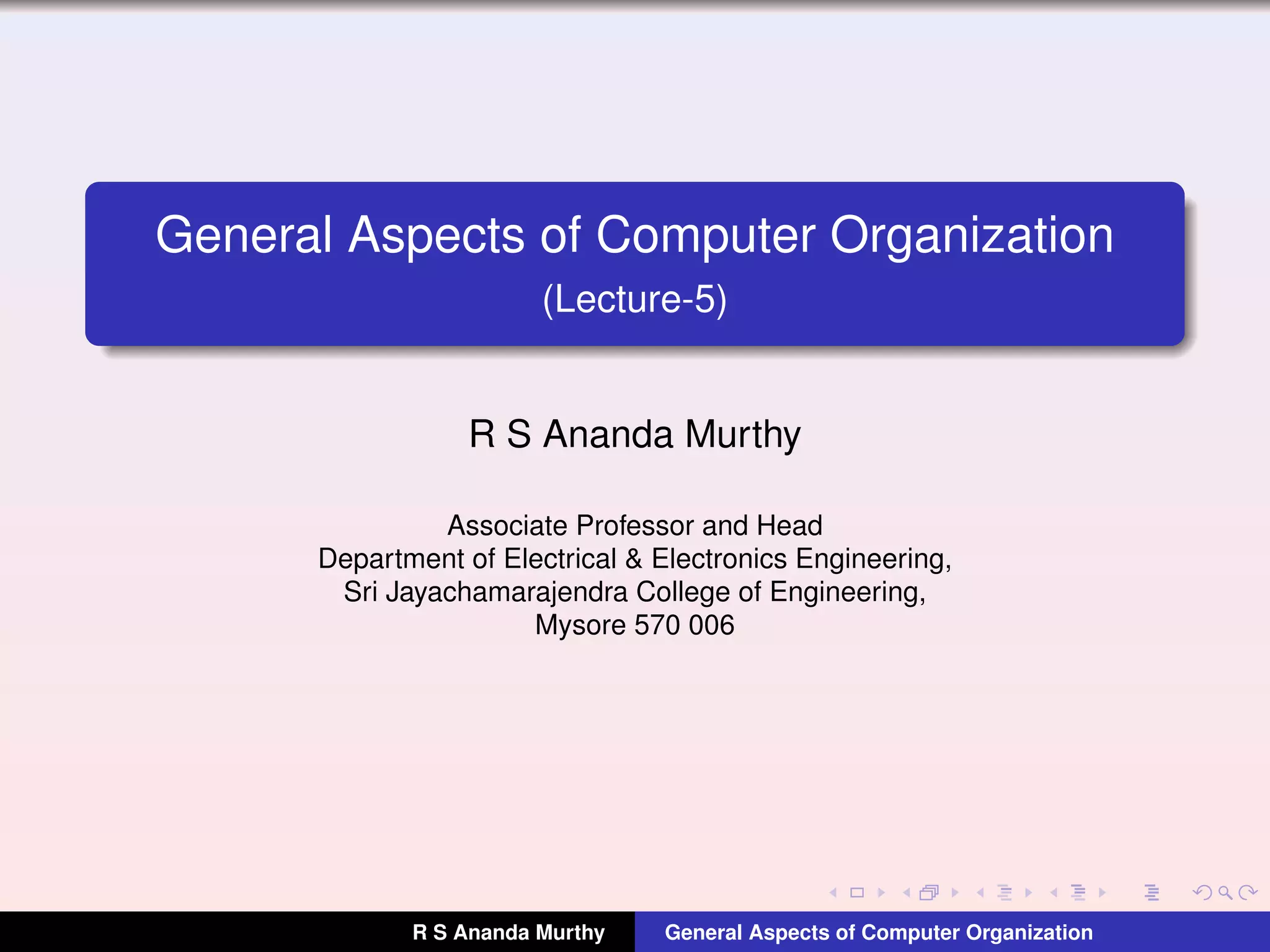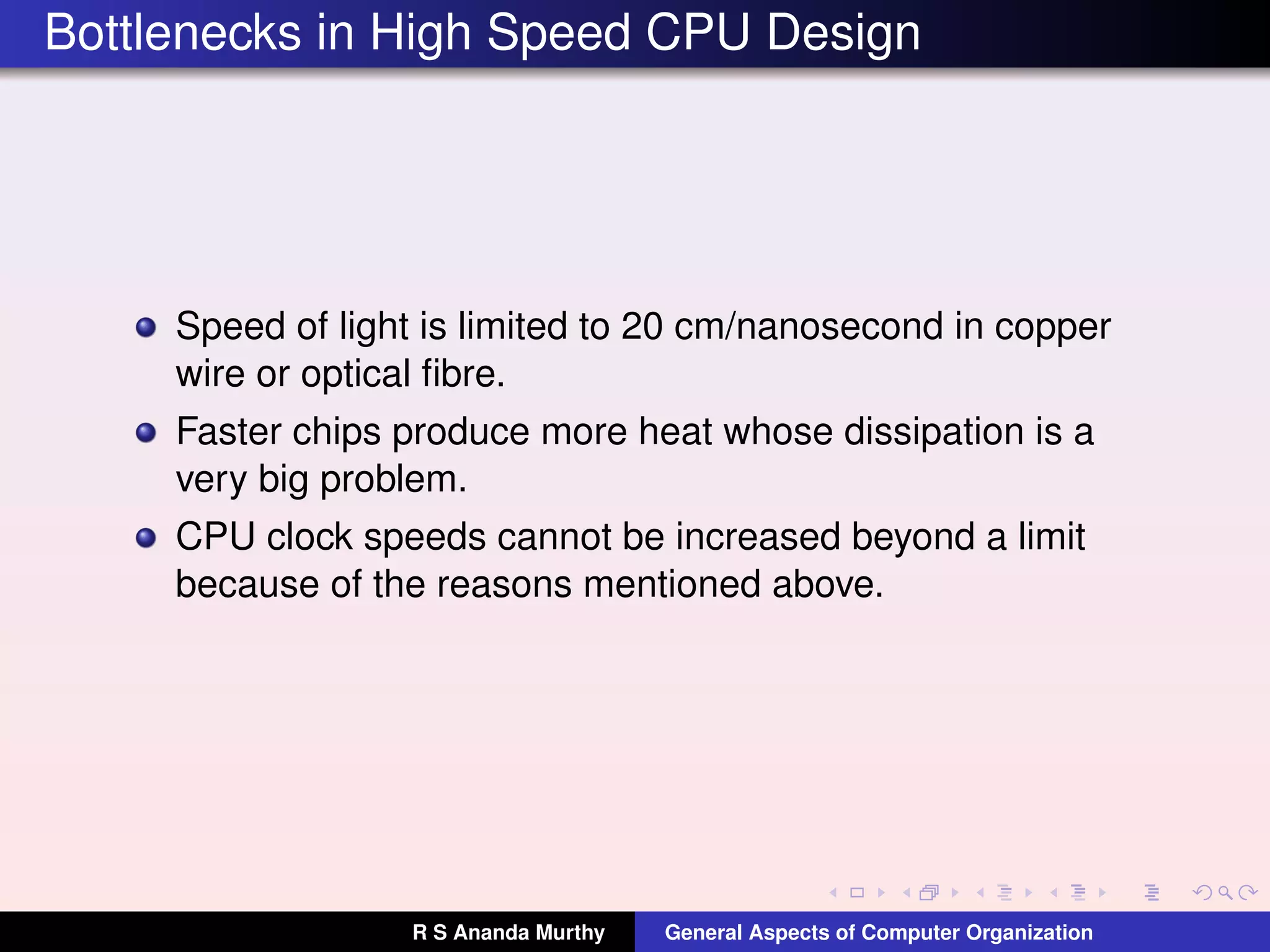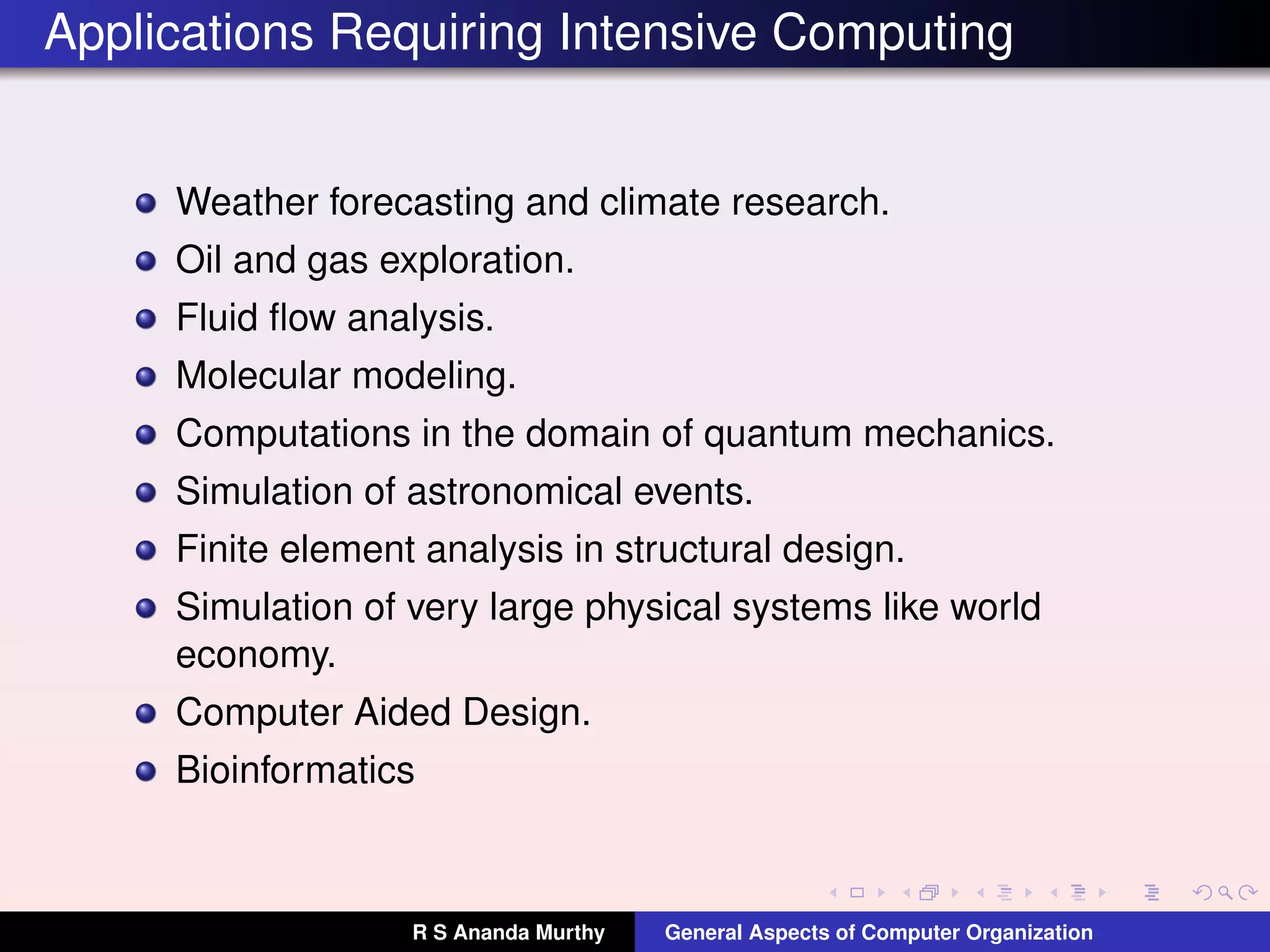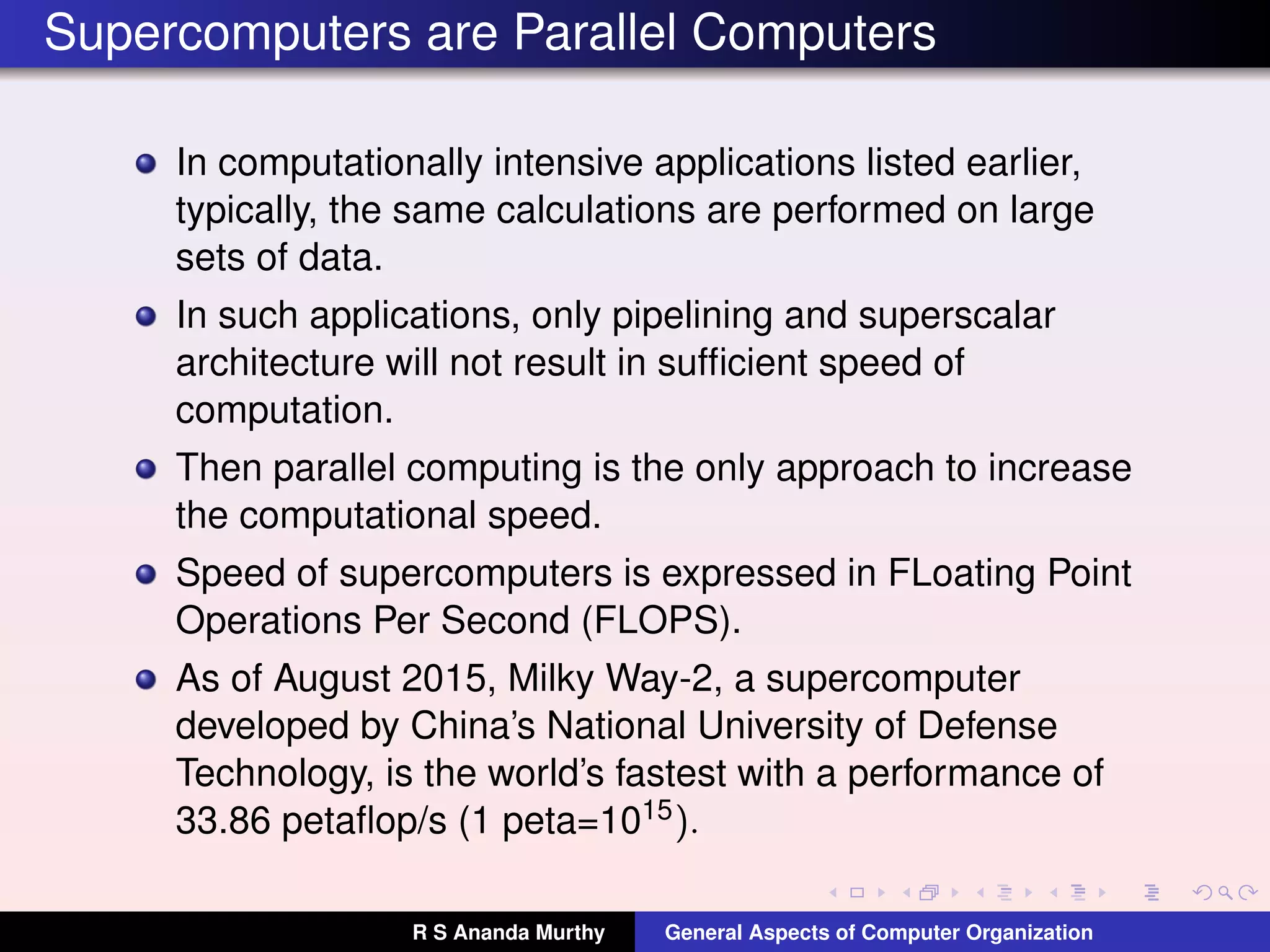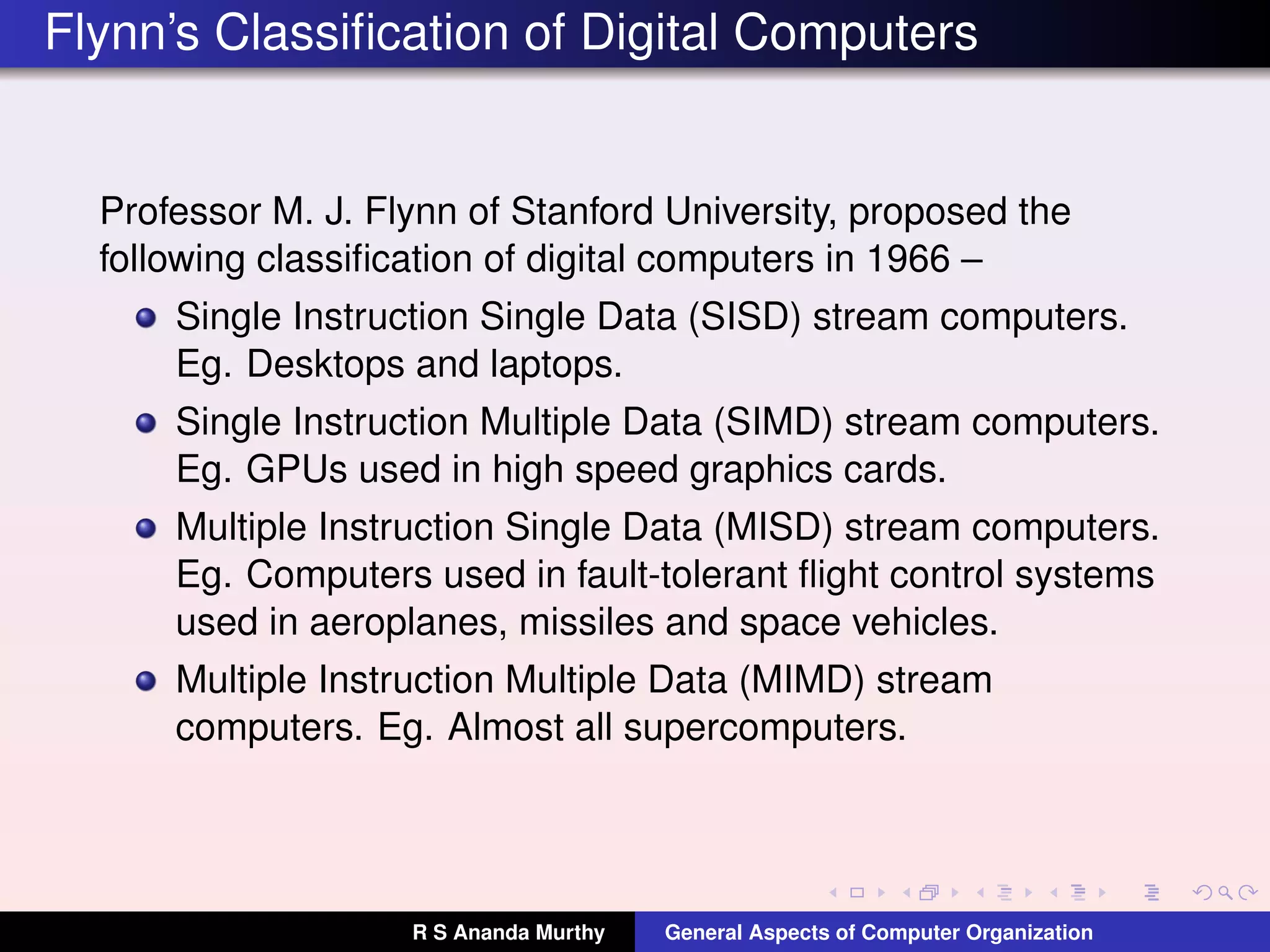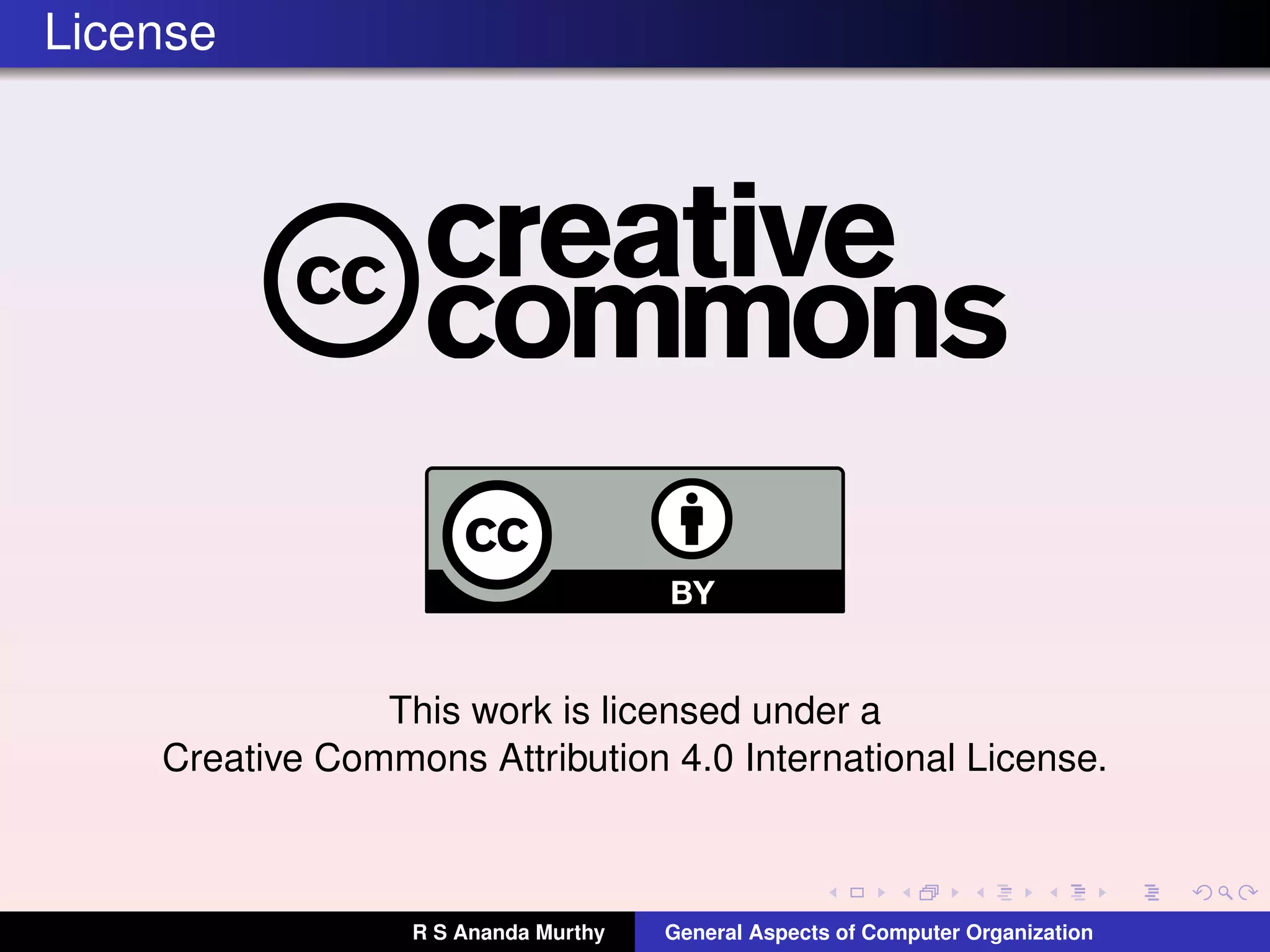The document discusses bottlenecks in high-speed CPU design, including that clock speeds cannot increase beyond a limit due to the speed of light and heat dissipation problems. It also discusses how reducing supply voltage and adjusting clock speeds dynamically can help conserve power and manage heat in CPUs. The document lists applications that require intensive computing such as weather forecasting, molecular modeling, and bioinformatics. It notes that supercomputers use parallel processing to achieve high speeds for such applications, with the fastest performing over 33 petaflops. The document also summarizes Flynn's taxonomy of computer architectures.
